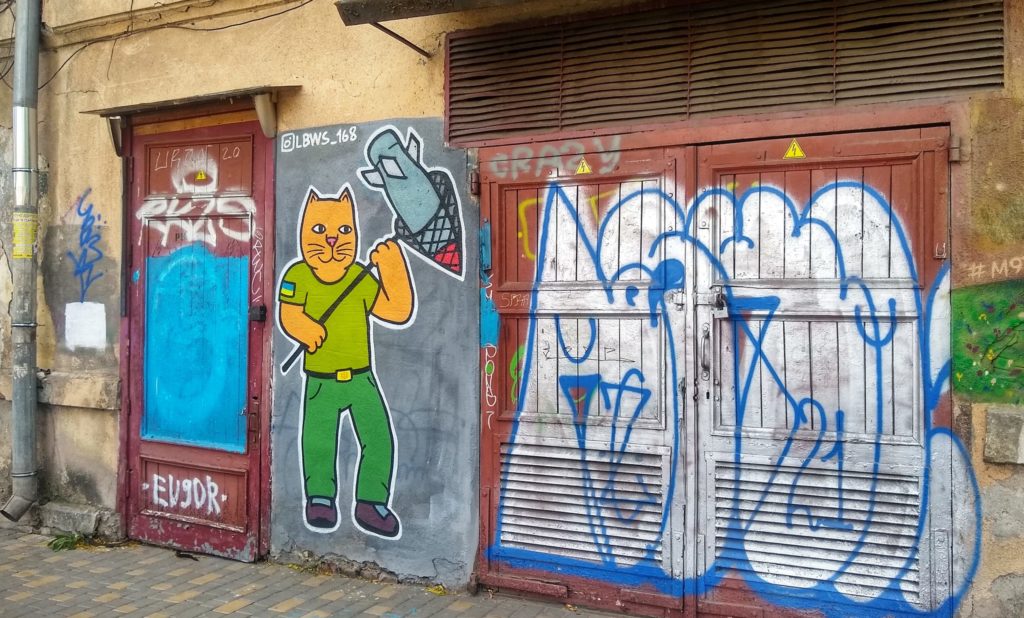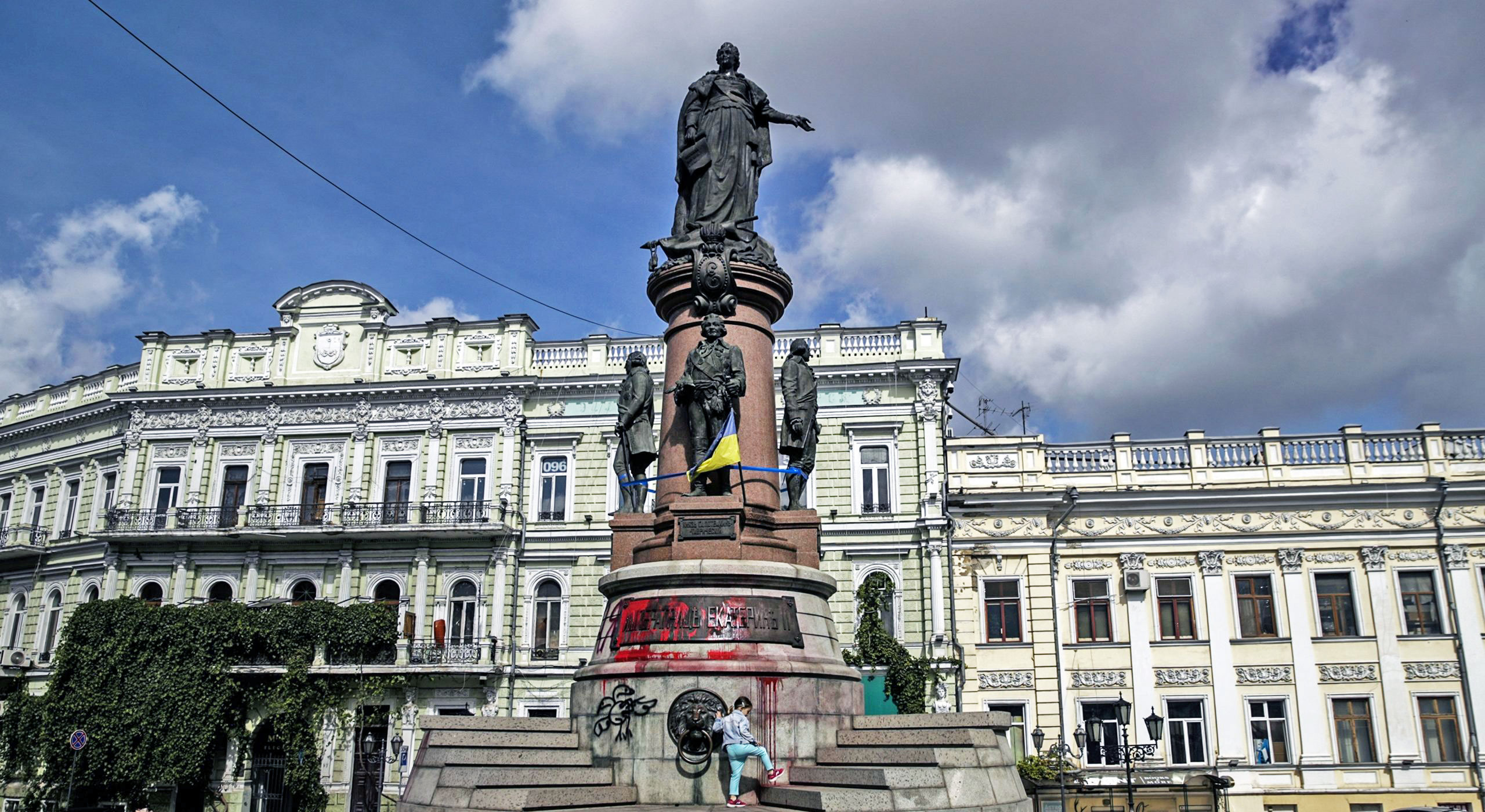Odesa
Opposite Odesa’s beautifully restored Hotel Grand Moscow is the city’s oldest park. A small, peaceful square with coffee shops and a glass-roofed bandstand. People wander in and out with their dogs, soaking up the low October sun. If it weren’t for two neat rows of newly-erected signs reminding residents that “The War Is Not Over Yet”, one might be forgiven for deeming Russia’s invasion a thing of the past.
Odesa is overwhelmingly Ukrainian but also Russian-speaking. Service workers regularly address me in Russian, forming cutesy diminutive words and peppering their speech with unfamiliar phrases that are a staple of Odesa’s character and humour. Others reject it entirely. “I would rather speak limply in English than use Russian,” Anton, a native Russian speaker, tells me.
The language issue has been somewhat overstated by external actors, but new street art in Odesa feels like part of a concerted, wide-scale effort to visibly stamp pro-Ukrainian loyalties on the city. Even by Ukrainian standards, the sheer quantity of patriotic street art in Odesa is notable. There are Ukrainian flags painted on nearly every other building. A local street art initiative, LBWS, has depicted anthropomorphic cats (another Odesa staple) catching missiles in fishing nets or waving the Ukrainian colours from their outstretched paws. Initially just a graffiti collective, “we started to make patriotic art to raise the mood of the citizens and the fighting spirit of the defenders,” they tell me.

It is worth remembering that the New York Times suggested in August that the “Pearl of the Black Sea” was Putin’s “ultimate target” in Ukraine. At the coastal Soviet Monument to the Unknown Sailor, plaques surrounding the central obelisk commemorate the USSR’s “hero cities”. Any Russian sites are now obscured by black bin bags. A central monument to Russia’s Catherine II — close to the top of the city’s famous Potemkin steps, immortalised by Soviet director Sergei Eisenstein — has been vandalised with paint. Back in July, a local petition to replace the statue with a figurine of gay porn star Billy Herrington garnered enough signatories to be reviewed by Ukrainian President Volodymyr Zelensky. Now, an official city survey indicates that almost half want it gone, and only 17% of people want to leave it as is. If this isn’t enough of an indication of where the city’s loyalties lie, one survey conducted shortly after the war showed that a massive 90% of residents considered Odesa Ukrainian.
But the city is not just attempting to declare its loyalties through these lower-key visual initiatives. Despite Odesa rejecting parts of its own history with makeshift tarpaulins or paint, Ukraine is now seeking central Odesa’s inclusion on UNESCO’s World Heritage list, joining other sites such as the Saint Sophia’s Cathedral complex in Kyiv and Lviv’s historic centre.
“Given daily threats of Russian strikes we must provide a clear signal that the world will not turn a blind eye to the destruction of our common history, our common culture, our common heritage,” Zelensky said on 11 October. It is unclear what protection, if any, this would grant Odesa from Russian airstrikes. After all, Russia was part of a mass bombing campaign against the UNESCO-protected city of Aleppo in Syria back in 2016. But as a Soviet “hero city”, a vital Black Sea port for grain exports, and with its rich tapestry of internationally-influenced architecture, perhaps Putin would, in his dreams, prefer to take Odesa whole.











Join the discussion
Join like minded readers that support our journalism by becoming a paid subscriber
To join the discussion in the comments, become a paid subscriber.
Join like minded readers that support our journalism, read unlimited articles and enjoy other subscriber-only benefits.
Subscribe